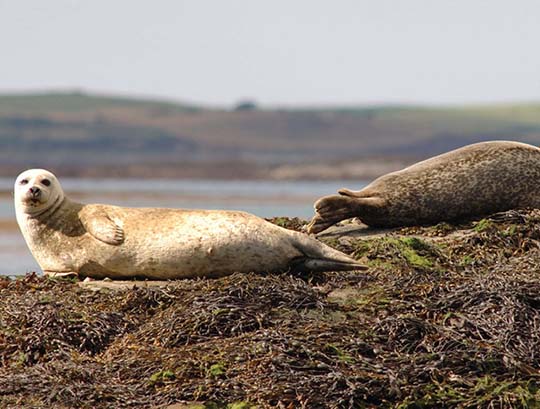Help Protect the Wildlife at Minerstown Beach.
Newry Mourne and Down District Council is asking beach goers to help protect Minerstown Beach and the wildlife that lives there.
During the recent sunny weather, people in the district have flocked to the seaside along South Down and with over 100 miles of stunning coastline of the Northrn Ireland coast, the residents of Newry Mourne and Down are spoilt for choice when it comes to choosing a location to enjoy the beach and the water.
Council Chairperson Councillor Laura Devlin said: “Minerstown beach in Dundrum Bay is one such place that has seen an increase in use during this period. Unfortunately, an increase in the use of the beach and its surrounding waters can cause some problems for the local wildlife. The Council is asking beach goers to help it protect these beauty spots and the associated plants and animals by being mindful of how their actions can impact on the environment.

“Minerstown beach is a very special place. It is very important for our local wildlife, and while we want our residents and visitors to enjoy the wonderful coast that our district has to offer, we also want to protect the habitats and species that make this place so special.
“Please help us to protect this area by not taking vehicles onto the beach, staying away from the seal haul-out sites, always keeping dogs under control and not allowing them to chase birds and taking your litter home.”
Found in the Strangford and Lecale Area of Outstanding Natural Beauty, Minerstown and neighbouring beach Tyrella are part of the Murlough Special Area of Conservation (SAC) and are protected as an Area of Special Scientific Interest (ASSI).
Minerstown is most notable for its honeycomb worm reefs and harbour seals. Harbour seals, which are protected by law, use the rocky outcrops just off shore as haul-out and pupping sites. For this seal species peak pupping season is end of June to mid-July, with pups weaning from their mothers approximately four weeks after birth.
For this reason, personal water-craft should stay away from the haul-out areas, particularly during 1 May – 31 October. Seals are very sensitive to disturbance so visitors are asked to please avoid approaching the haul out sites.
The intertidal zone, or the area between the high tide and the low tide marks, of Minerstown beach is an important site for sandflats with boulders containing the honeycomb worm reef, a Northern Ireland priority marine feature.
This marine worm lives in tubes constructed from small pieces of sand and shell fragment cemented together forming reefs between pebbles and boulders in the middle shore. These delicate reefs are under threat from trampling underfoot of beach users or crushing by vehicles as the fragile tubes are easily damaged. Therefore, visitors are asked to please avoid walking over them and not to take vehicles on to the beach.
Understanding the impact that our actions can have and following this simple advice will protect the health of the wildlife at Minorstown beach and protect the beach for future generations.

























